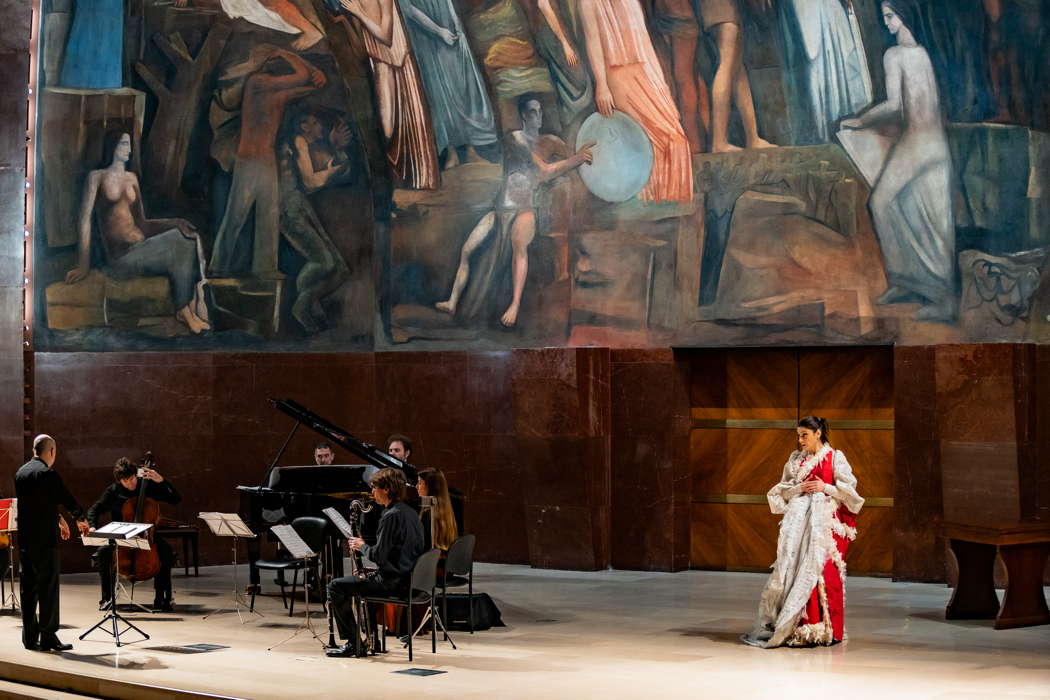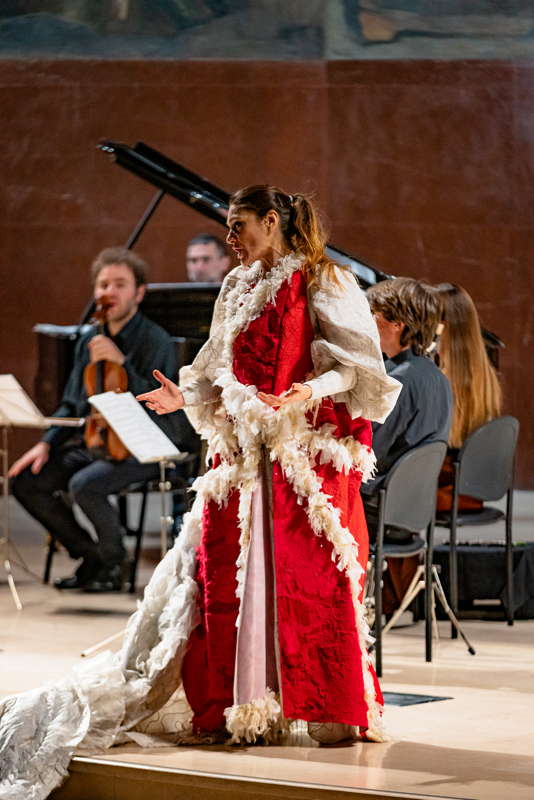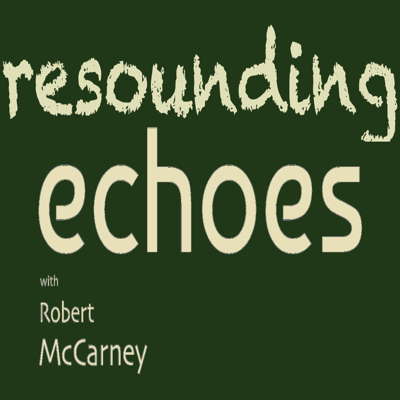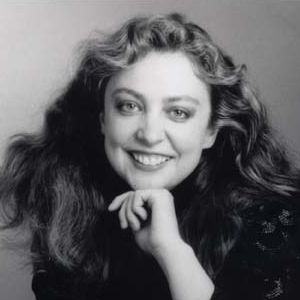 WORD SEARCH: Can you solve Allan Rae's classical music word search puzzles? We're currently publishing one per month.
WORD SEARCH: Can you solve Allan Rae's classical music word search puzzles? We're currently publishing one per month.
Pierrot in Rome
Music by Arnold Schoenberg, Sylvano Bussotti and Giacomo Puccini, heard by GIUSEPPE PENNISI
On 1 February 2022, in the auditorium of Rome University La Sapienza, I saw and listened to a rare performance of one of the musical masterpieces of the twentieth century as a part of the concert series of the Istituzione Universitaria dei Concerti (IUC). I remember only a previous one in Rome, ten years ago on the occasion of the centenary of the debut in Berlin of the work. Then, the performance was scheduled on a Sunday morning at 11am at the National Theatre. It attracted a quite small audience; Cristina Zavalloni was also the protagonist at that time; on the podium was Carlo Donadio.
At the Aula Magna of La Sapienza University, the public flocked to the big auditoriums within the limits allowed by law. (Due to COVID, unlike theatres, university classrooms can be filled to fifty percent of the capacity.) The composition is short - about half an hour. Usually, in the performances it is accompanied by other pieces of the same period: I remember a stage version at the Aix-en-Provence Festival in 2003 in which Pierre Boulez conducted the Ensemble InterContemporain, Anja Silja was the protagonist and the stage direction was by Klaus Michael Grüber. It was a single act of ninety minutes merging the work with Renard by Stravinsky as well as with El retablo de maese Pedro by De Falla; the success was such that, rare for a festival, the production was resumed in 2006.
The IUC has made the right choice to merge Arnold Schoenberg's three short chapters with very short pieces by Sylvano Bussotti. Bussotti's charming stage dress worn by Cristina Zavalloni was also an element to stress analogies between the two composers. Even if they lived and worked in different periods of the twentieth century, they are united - Marco Angius correctly recalls in the program notes - by both being 'heretics'.
Pierrot Lunaire (and all of Schoenberg's other works) were considered 'degenerate' by the Nazis and banned, while in the same years, they continued to be performed in Italy. They had a strong supporter in Gian Francesco Malipiero, one of the musicians most listened to, and admired by, the Head of Government of the time, Benito Mussolini; he was allied with the Germans but not a real friend of them or of their cultural tastes.
Pierrot Lunaire is a composition for female voice (Sprechgesang), piano, flute (alternating with piccolo), clarinet in A (alternating with bass clarinet in B flat), violin (alternating with viola) and cello. Written on commission in 1912, it is Schoenberg's most famous work as well as considered a manifesto of musical expressionism, which proposes in music the same themes as the figurative one. Schoenberg uses for the first time the technique of Sprechgesang, or 'spoken singing': a vocal style in which the characteristics of spoken sound and sung sound are combined and which has become a feature of German musical theatre for several years.
The singer-actor, while strictly maintaining the rhythm, must just sing the actual note and then immediately abandon it. Sprechgesang must be halfway between the sung and spoken words. It is a challenge that few performers today also take up for the not easy request between singer-actor and instrumental ensemble. A strong point of this performance is the ability of Cristina Zavalloni and the ensemble directed by Marco Angius - perhaps the Italian conductor who is most dedicated to modern and contemporary music - to perfectly converge the 'spoken singing' and the instrumentalists.

Cristina Zavalloni and the MDI Ensemble conducted by Marco Angius at the IUC 'Pierrot Lunaire' concert at the Aula Magna della Sapienza in Rome. Photo © 2022 Andrea Caramelli and Federico Priori
Pierrot Lunaire is based on a Lieder cycle from a collection of fifty poems - Schoenberg chose twenty-one - by Belgian symbolist Albert Giraud, set to music in the German translation by Otto Erich Hartleben. The poems are divided into three groups of seven each. The protagonist is the virtuoso poet Pierrot, a melancholic and sad hero, who juggles poetically expressing himself and his ambiguous character. The romantic image is deformed into grimaces and projected into images, now grotesque, now hallucinated. He sings to the moon that inspires him, lives the deepest anguish, imagines himself a murderer, and finally after torments and moments of pure cynicism, he returns to his city and home, Bergamo, invoking in the last song 'the ancient scent of the times of fairy tales'.
In the IUC performance, as mentioned, the three groups of Lieder are interspersed with very short pieces by Bussotti that evoke the expressionist context in which the work was born. They are: Arlequin for piano, flute, clarinet, violin, viola and cello; Couple for flute and piano; and For three on the piano.
Schoenberg defined with extreme rigor the rules of interpretation, from the preface and the published notes to the score itself. The orchestration is very varied and lively. Only six of the twenty-one pieces in which the work is articulated needs the complete ensemble, while in the other pieces, the instruments are used in groups of two, three, four even. In the seventh Lied (the sick moon) the voice dialogues only with a flute.

Cristina Zavalloni with members of the MDI Ensemble at the IUC 'Pierrot Lunaire' concert at the Aula Magna della Sapienza in Rome. Photo © 2022 Andrea Caramelli and Federico Priori
Angius, Zavalloni and the ensemble perfectly rendered the extreme tonal instability, due to the lack of any centre of harmonic attraction. As an encore there was a real gem: Puccini's lullaby L'uccellino (The Little Bird) in Bussotti's version.
Given the success, I encourage the IUC to propose the Italian masterpiece mirrored to Pierrot Lunaire - Le sette canzoni (The seven songs) taken from Malipiero's Orfeide. In Italy, this great piece has not been heard live for decades. (Sometimes it appears in American university theatres.) There is only a difficult to find CD based on a recording made at the Maggio Fiorentino back in 1966.
Copyright © 3 February 2022
Giuseppe Pennisi,
Rome, Italy





